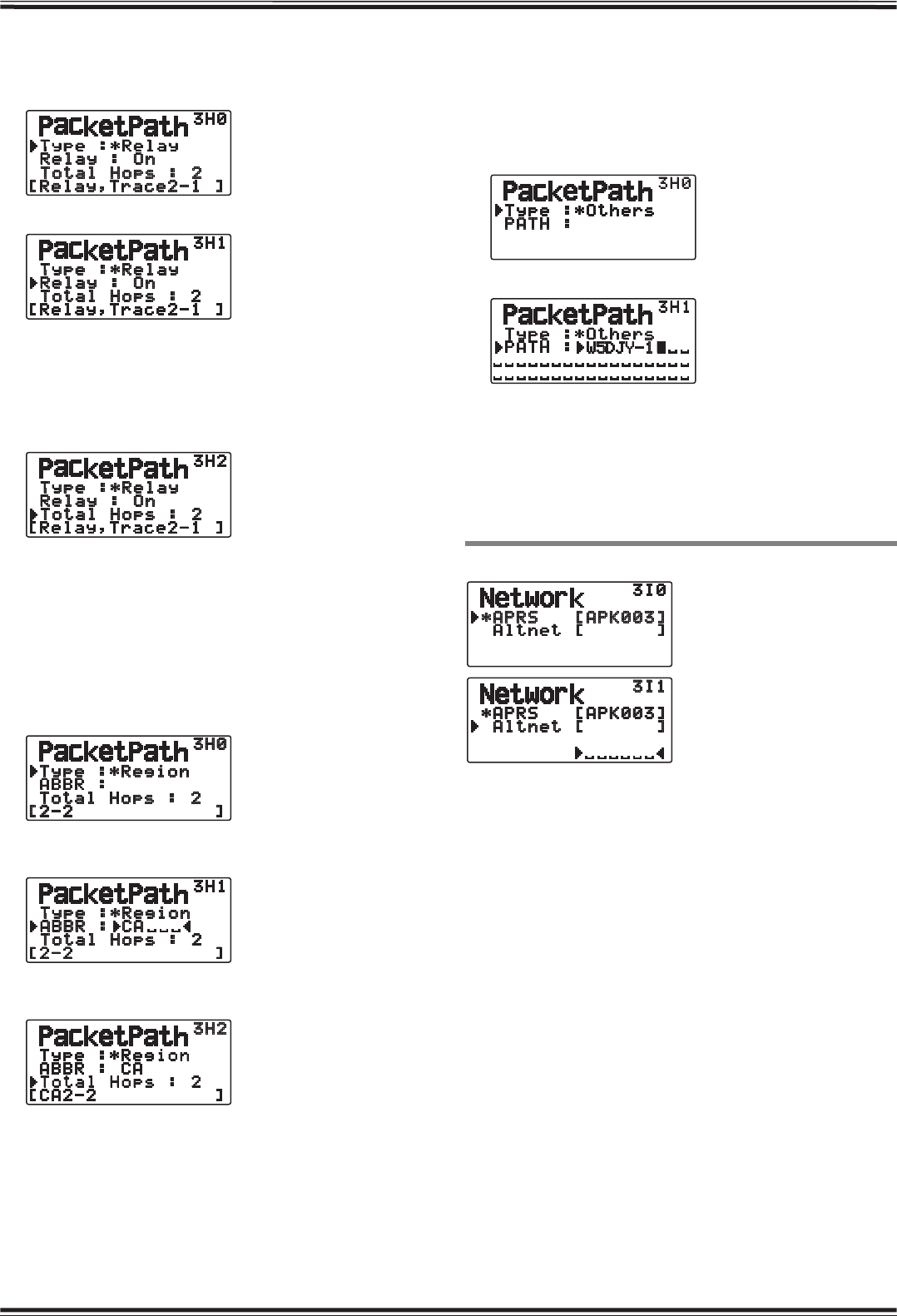
APRS – 19
Relay:
This is one of the digipeat types used in Europe.
1 Set the <Type> to “Relay”, then press [MHz].
2 Set <Relay> to “Off” or “On”.
• Set <Relay> to “On” to use the digipeater of the Fill-in
type (RELAY type) with the <Relay>.
• When set to “On”, 1 packet path in addition to RELAY can
be used, as per the <Total Hops> setting.
3 Select the relay step number for the <Total Hops>
setting.
• You can confirm the setting contents in [ ].
Region:
Use this method when the packet is being relayed within
only a limited area.
Packet paths are specified using ABBR (abbreviations).
(In America, for example, CA represents California, AZ
represents Arizona, etc.)
1 Set the <Type> to “Region”, then press [MHz].
2 Using the ABBR setting, enter an abbreviation of up to
5 characters.
3 Select the relay step number for the <Total Hops>
setting.
• You can confirm the setting contents in [ ].
Others:
Use this method when the relay path is specified to an
individual.
When a character string is not entered, the packet data is
not relayed.
1 Set the <Type> to “Others”, then press [MHz].
2 Enter a path.
• A Packet path is the digipeat route of the packet data sent
from My station.
For example, if you want your packet to take the [W5DJY-
1] > [W4DJY-1] route, enter [W5DJY-1, W4DJY-1],
separating each digipeater call sign with a comma.
NETWORK
Access Menu 3I0 and 3I1.
Set APRS data communications UNPROTOCOL.
UNPROTOCOL is the method in which packet data is
transmitted without other stations or making a connection.
Select either “APRS(APK003)” or “Altnet”.
APRS: (Use this setting for normal use: default setting)
When transmitting messages and meteorological data
using the TH-D72, “APK003 is added to the packet,
following your station call sign.
There are no restrictions on received packets.
Altnet: When it is necessary to add restrictions to
received packets, you can set it for special use.
Select “Altnet” and press [MHz], then enter your desired
character string.
When transmitting messages and meteorological data
using the TH-D72, the character string you entered is
added to the packet, following your station call sign.


















